This post may contain affiliate links, meaning I can earn a small commission from items you purchase (at no cost to you).
I get asked all the time about how to increase fiber in green smoothie recipes. You can only add so much spinach or kale before you’re over it. So I thought, “Why don’t we make fiber smoothie cubes?” So these fun + simple frozen smoothie cubes are loaded with fiber and protein to fuel your day and keep you regular.
Can I get a kale yeah?!
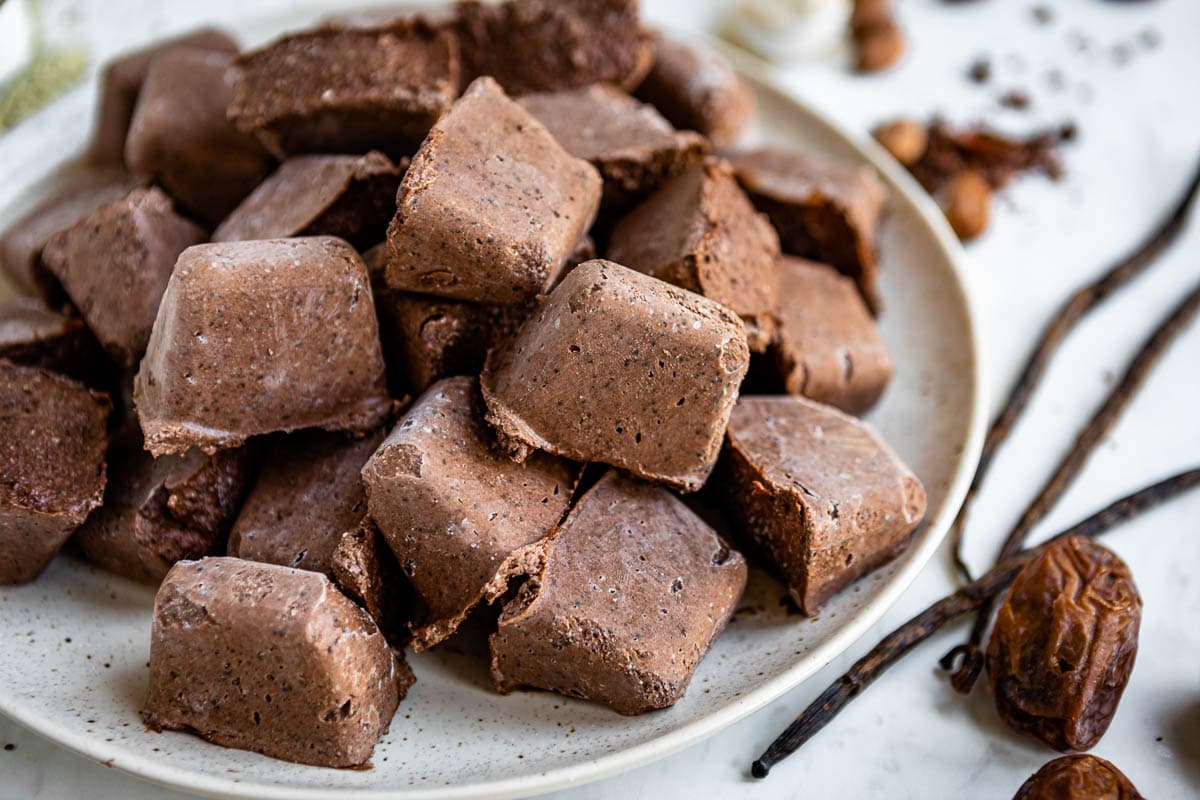
Table of Contents
How To Use Fiber Smoothie Cubes
The other recipes in our Smoothie Cube Series include directions for substituting a portion of fruit in a recipe with the cubes. This one is a little different in that it is designed to be used as a replacement for all the fruit in the recipe and blended with your choice of liquid and leafy greens, if desired.
You can add it to a fruity smoothie, but it will do the job by itself as a meal replacement. Add a banana or another pitted date for added sweetness.
Why I Love Smoothie Cubes
Green smoothies are my first line of defense when it comes to keeping my body healthy. Starting the day with whole foods, specifically plants, is such a healthy habit.
Yet I know that my body needs certain nutrients at certain times of the year.
Frozen smoothie cubes are like little bombs of nutritiously dense goodness. Each recipe is specifically designed to provide targeted vitamins + minerals. I keep electrolyte cubes on hand for my long runs, especially during summer.
Blender bombs made with alkaline veggies help when my gut needs some help. Basically, I’ve got a smoothie cube recipe for everything!
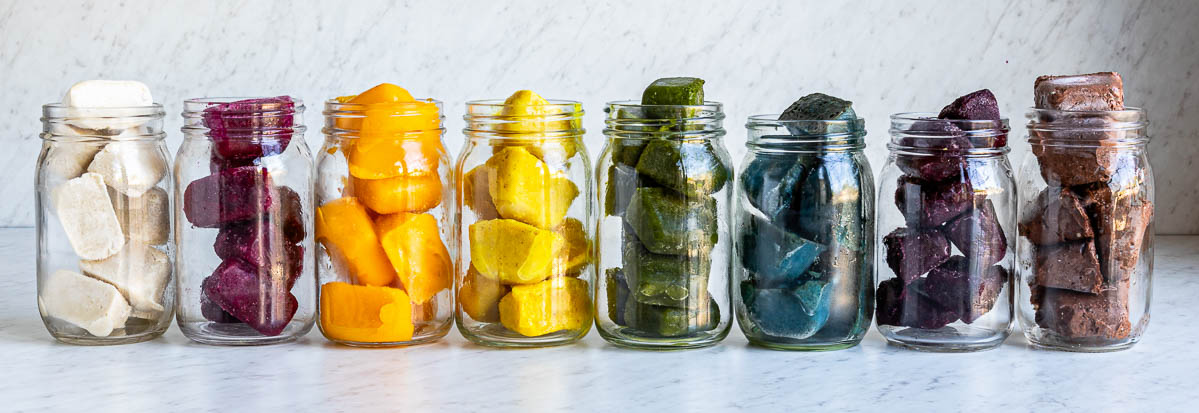
Cubes of Every Flavor
Each one of these recipes is designed be frozen in an ice cube tray, then stored in the freezer until you’re ready for a plant powered boost. I usually keep 2 or 3 different kinds of smoothie cubes on hand, so that I don’t need to rush around finding ingredients at a moment’s notice. Here are my fav smoothie cubes:
- Antioxidant smoothie cubes– Use these when in need of a beauty boost. Just replace the fruit in your next smoothie with 4 cubes.
- Alkaline veggie smoothie cubes– These provide a green veggie boost. Replace the leafy greens in your next smoothie with 4 of these cubes.
- Electrolyte smoothie cubes– When you think of these cubes, think of an energy boost. No matter the workout, big or small, you need to be replacing your electrolytes. These cubes do just that!
- Coconut milk smoothie cubes– These are healthy fat bombs of goodness. Add some of these cubes to your next smoothie, and watch your hair shine, as well as your skin.
- Anti inflammatory cubes– Just like the name suggests, these blender bombs are loaded with veggies that help soothe inflammation in the body. These can easily be added to any smoothie (tropical flavors are the most complimentary!).
Fiber smoothie cubes- The recipe below isn’t just an excuse for a chocolate fix. These cubes are full of fiber + protein, 2 vitally important nutrients for your body. Let’s learn more!
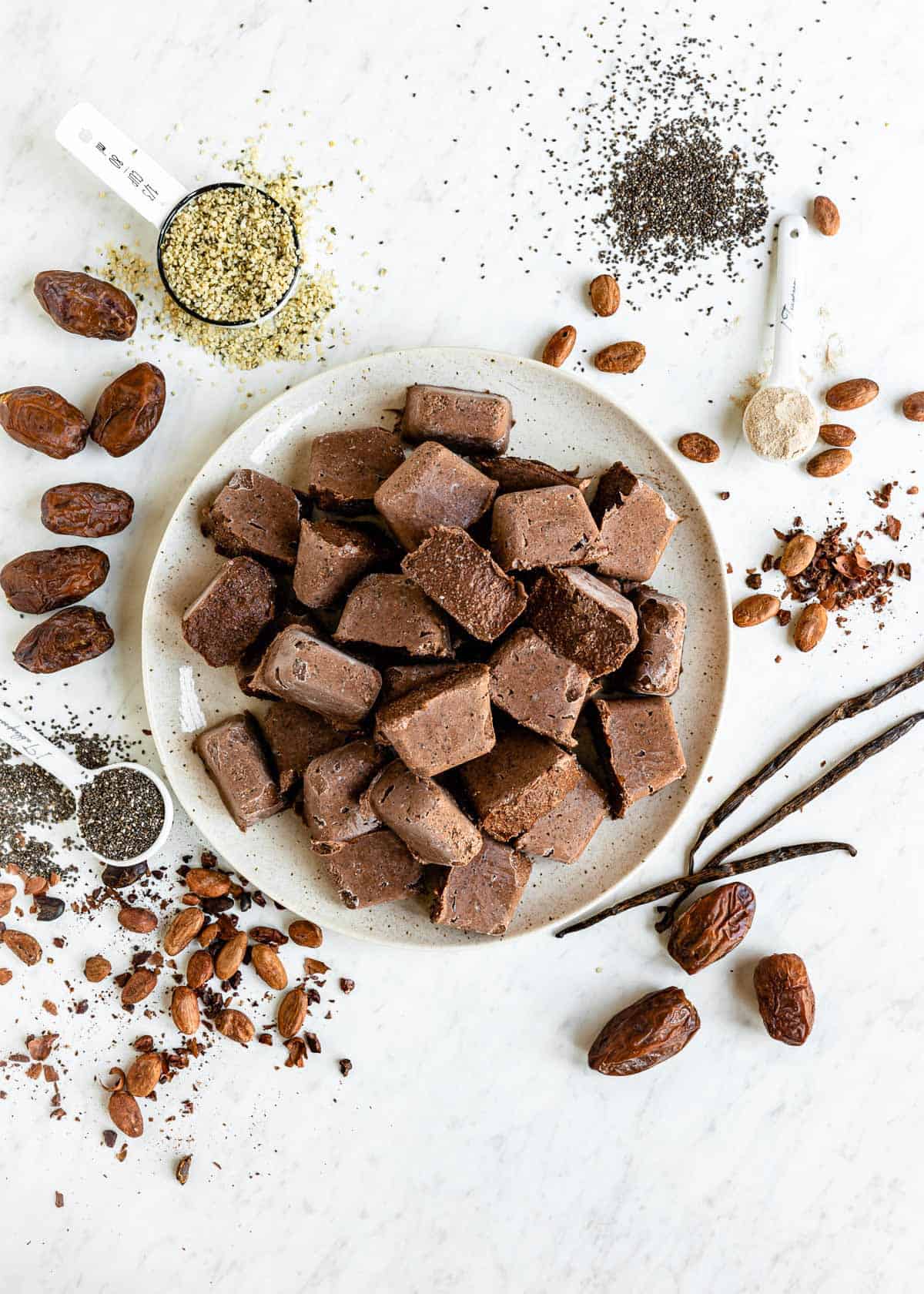
The Importance of Fiber and Regularity
Staying “regular” is a top priority for most of us, or at least it should be! Fiber works like little scrubbing brushes on the inside of the digestive tract. It adds bulk and keeps things moving along when in proper balance. Regularity is a sign that the body is working like it’s supposed to, using the nutrients consumed and ridding itself of waste or excess.
Please note that “regularity” is the ideal situation.
There are a lot of conditions, medications, and situations where regularity is really difficult to achieve. See your health practitioner for specific recommendations if constipation, diarrhea or bloating, as well as excess gas are an ongoing problem for you.
Another trick to staying regular is to make sure you’re consuming enough food, preferably moderately high or high in fiber, at regular intervals. Skipping meals or eating too little (such as with fasting, dieting, calorie-dense but low-volume foods) can contribute to irregularity. In any case, it is super important to make sure your body is getting enough fiber and that your digestive tract is humming along.
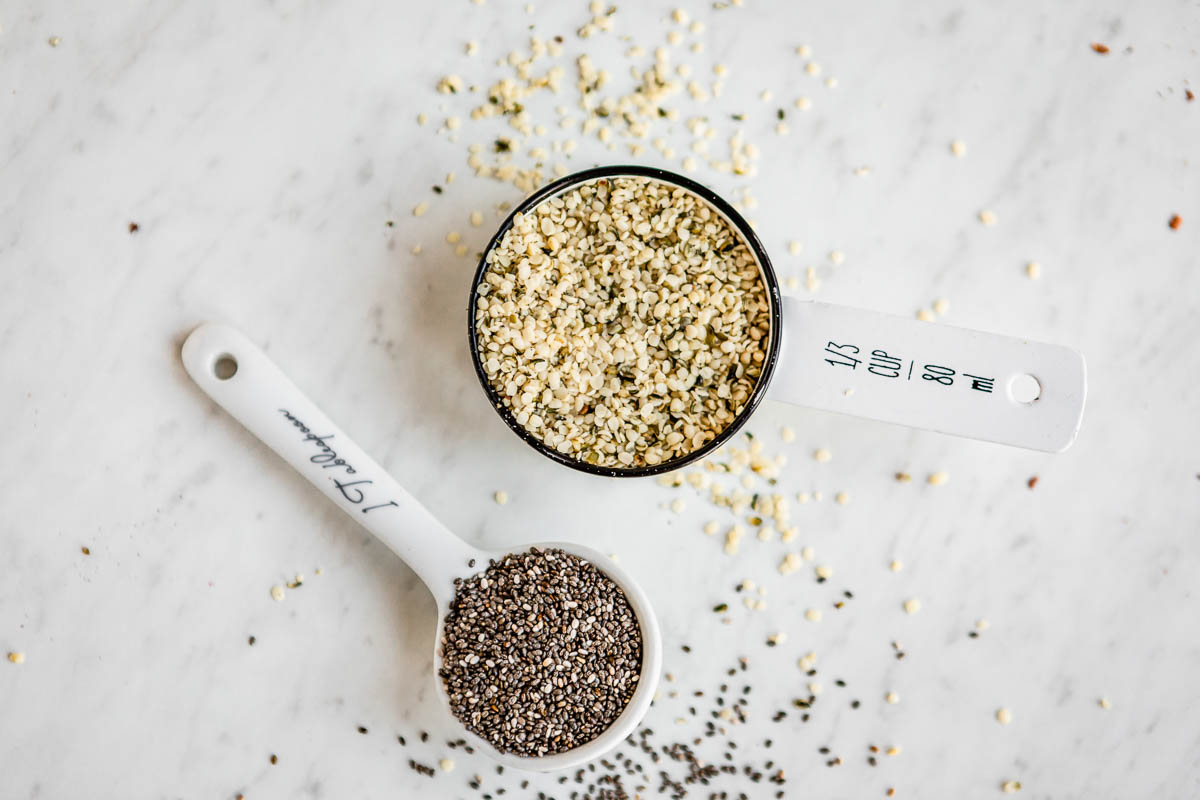
Protein + Fiber: a Smoothie Cube Dream Team
Protein and fiber go hand in hand for keeping the body satiated, which is why I included a balance of both in my frozen smoothie cubes. Both help stabilize blood sugar and burn more slowly than quick, or simple carbs like white flour and sugar.
A balanced meal will include protein, complex carbohydrates, and fats. Within those parameters, all kinds of food can fulfill the requirements, and sometimes more than one. Yet Americans aren’t getting the recommended daily intake of fiber, and that’s a problem!
Protein consumed without fiber, leads to a backup, if you know what I mean. Straight-up protein can be hard on the digestive tract as well as cause things to slow waaaaaay down. It’s a good thing plants typically contain both protein and fiber.
Conversely, if you consume too much fiber at once, it can cause things to speed up. Balance is the goal and that’s where these fiber blender bombs come in handy.
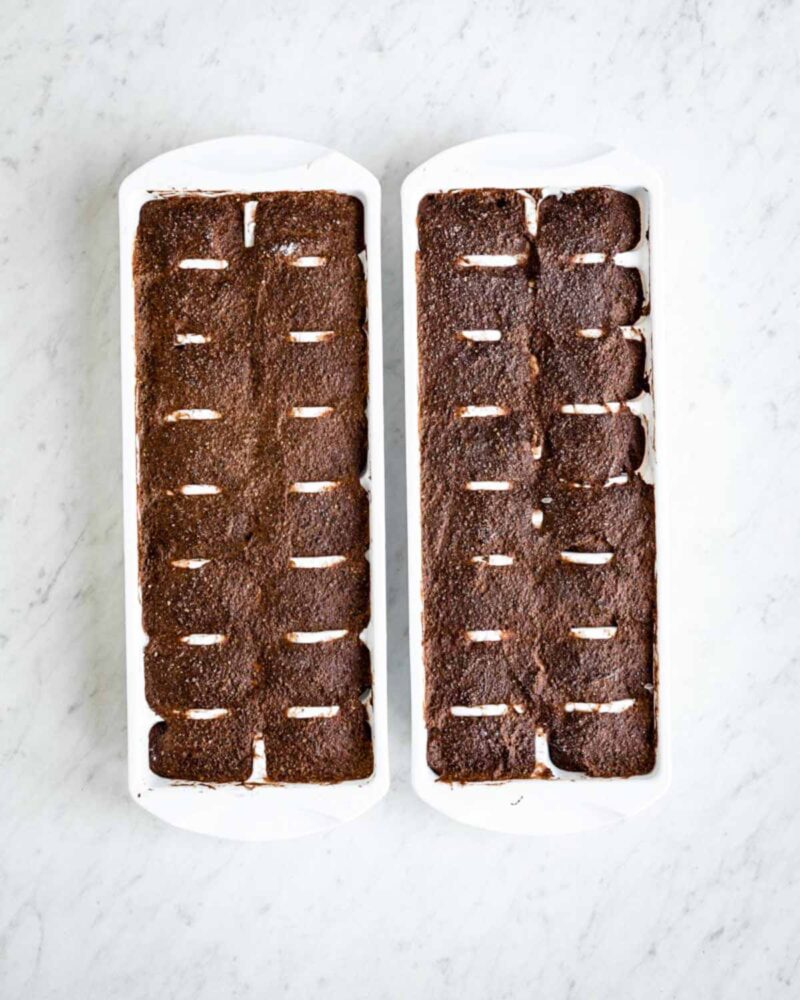
What Can I Add to My Smoothie for Fiber?
Plants are the only source of fiber. Chicken, beef, fish, pork, eggs, and other animal products contain 0% fiber. Plants are made up almost entirely of fiber along with water, fats, and starches. Fiber itself is essentially just a carbohydrate. Dietary fiber cannot be broken down by digestive enzymes.
Here are some ways to add fiber into your smoothies:
- dark leafy greens
- whole fruits (not juice)
- psyllium husk powder
- hemp powder
- banana
- chia Seeds
- fiber smoothie cubes
- pears
- strawberries
- avocado
- apple
- raspberries
Fun fact: Processed foods have little to no fiber, even if they were once plants long, long ago. White flour is a processed type of wheat that has had the germ and bran removed to make it softer and easier to digest. But with that processing, most of the dietary fiber has been removed.
It is incredibly important to include whole grains and pseudograins in the diet to maintain digestive health. Those following a grain-free diet should make sure to eat plenty of fiber-rich fresh fruits and vegetables.
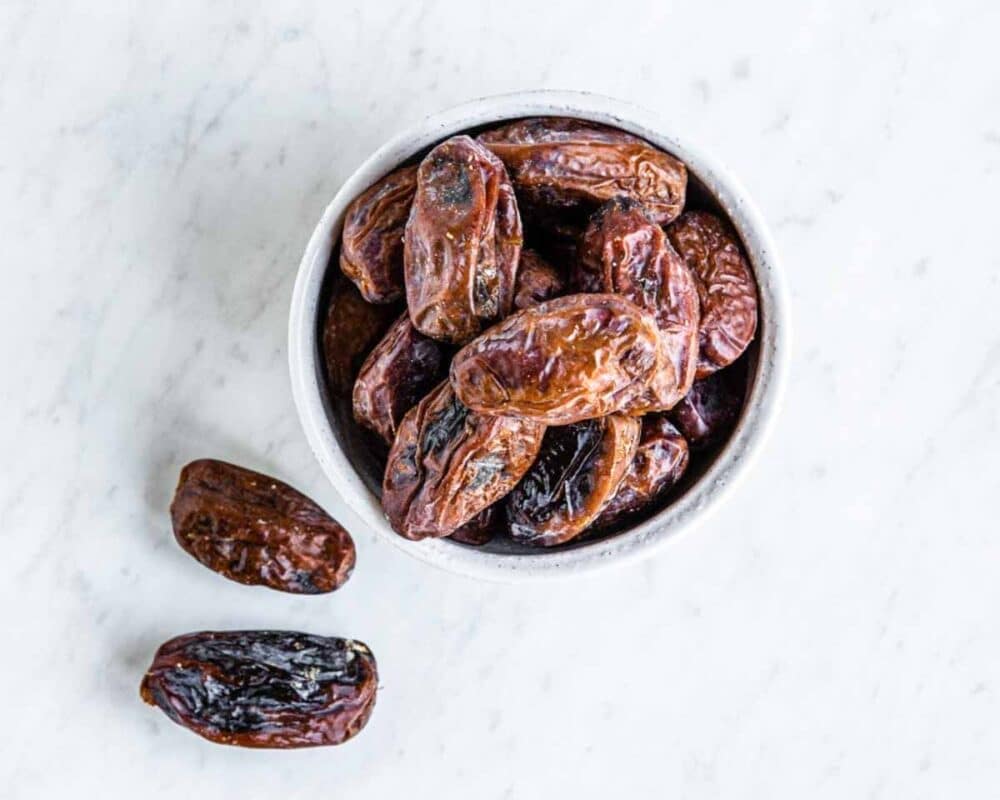
Soluble vs Insoluble Fiber
There are two kinds of fiber our bodies need – soluble and insoluble fiber. Most plants contain a bit of each and both have health benefits including staying fuller longer after meals, a lower risk of illness and disease (particularly of the digestive and cardiovascular systems).
Soluble Fiber
Soluble fiber dissolves in water or other liquids and transforms into a gel-like substance that is digested by bacteria. This produces gas as a by-product. Soluble fiber in foods is a source of calories.
Foods that are good sources of soluble fiber include beans, peas, oats and barley, as well as some fruits like apples and citrus.
Soluble fiber health benefits:
- Lowers fat absorption
- Helps maintain a healthy weight
- Stabilizes blood glucose levels
- Reduces risk of heart and cardiovascular diseases
- Lowers bad cholesterol levels
- Keeps good bacteria in the digestive tract healthy and alive
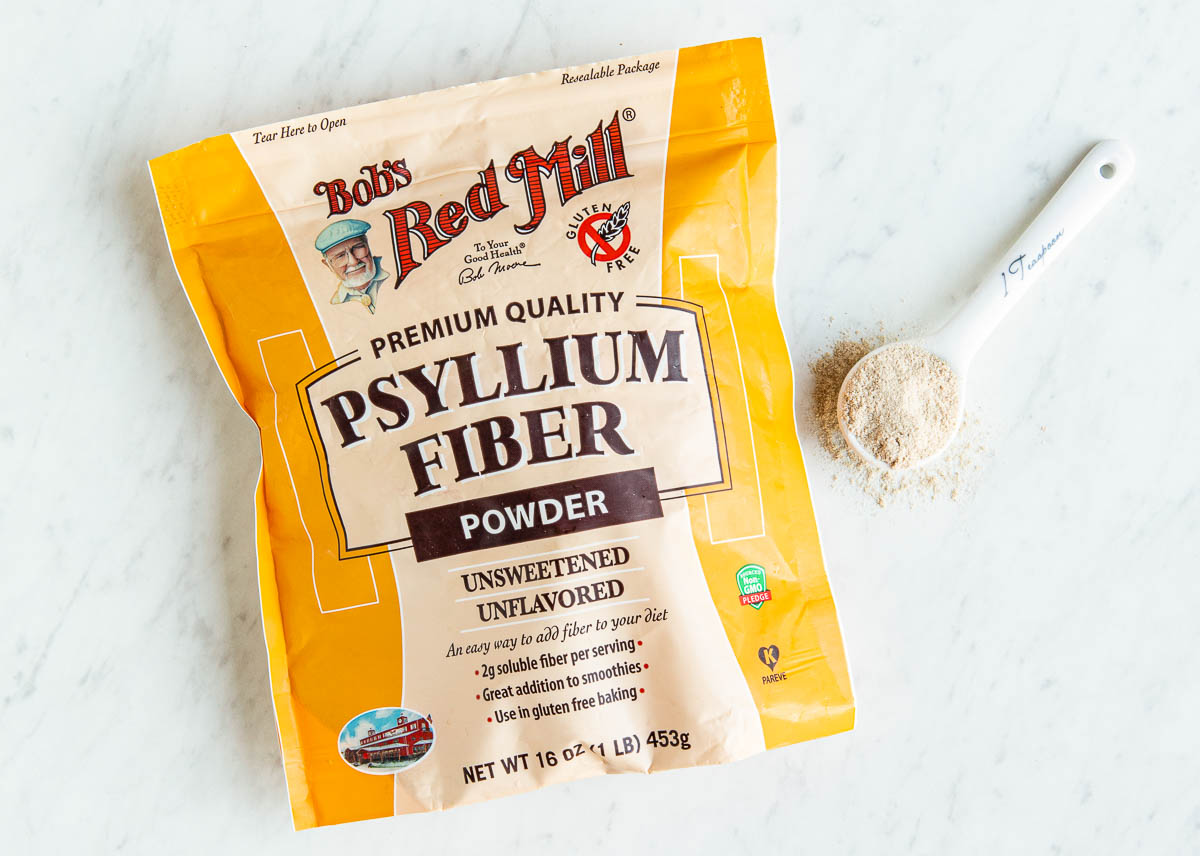
Insoluble Fiber
Insoluble fiber does not dissolve in water and remains intact or unchanged throughout the digestive tract and process. Because of this, it is not considered a source of calories as it is not digested.
Foods that contain insoluble fiber include beans and legumes, whole grain (such as whole wheat) or bran products, green beans, corn, kale, spinach, kiwi, berries, grapes, potatoes, cauliflower, and nuts. Most veggies and fruit contain some insoluble fiber.
Insoluble fiber health benefits:
- Regularity – prevents or helps with constipation
- Lowered risk of intestinal issues and blockages
- May reduce risk of colorectal cancer
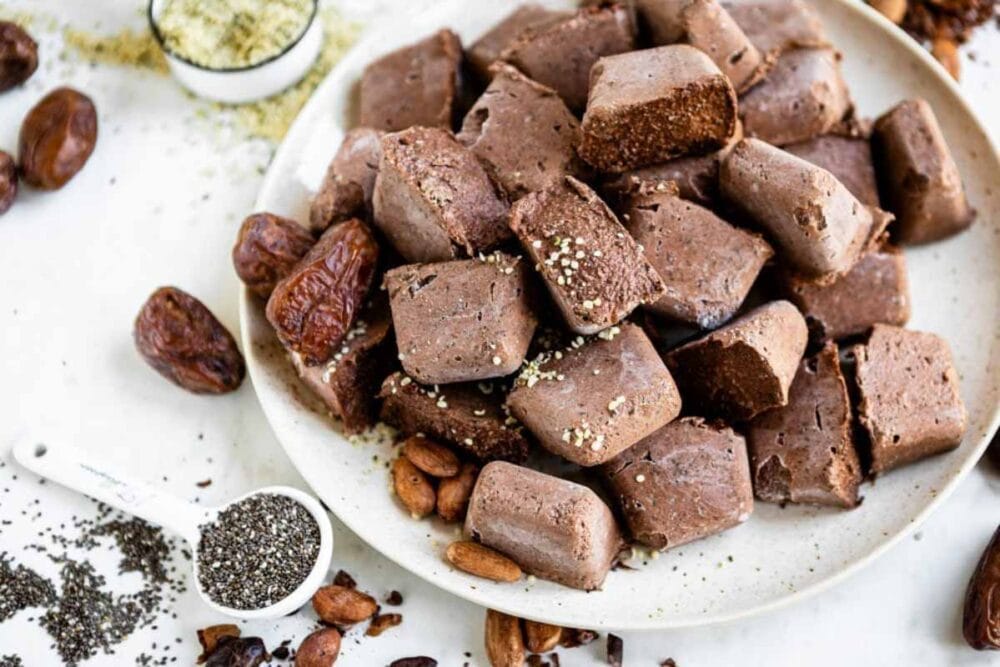
Now, let’s get to blending these frozen smoothie cubes! Don’t forget to leave a comment + review once you’ve tried these. I’d love to know how you liked them!
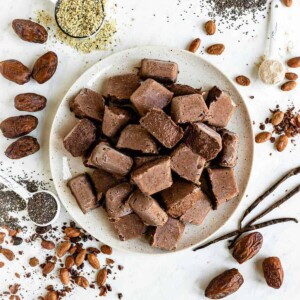
Fiber Smoothie Cubes
Ingredients
- 4 cup almond milk plus more if needed
- ½ cup chia seeds
- 1 cup hemp hearts
- 8 tsp psyllium husk powder
- 4 tbsp cacao powder
- 8 medjool dates pitted
- 2 tsp pure vanilla extract
- sea salt, unrefined
Instructions
- Place 2 cups almond milk and chia seeds in a bowl and stir well. Let sit for 10-15 minutes.
- Pour chia gel into a blender jar. Add the other ingredients. Puree until smooth. Add a little more liquid, if needed, for easier blending. The mixture will be very thick with a pudding-like texture.
- Transfer the mixture to two standard, 16-well ice cube trays. It’s okay if the mixture overflows the wells a bit, as long as it doesn’t go over the sides of the trays themselves.
- Place trays in freezer and freeze overnight, or until completely solid. Pop the cubes out of the trays and place in an airtight, freezer-safe container. Store in freezer for up to 2 weeks, or a little longer if using a deep freezer.
- To use, add 1 cup liquid and 2 cups your choice of leafy greens to a blender, add 4 fiber cubes. Blend until smooth. If not sweet enough, add part of or one whole ripe banana, or a little maple syrup, to taste.
Helpful Tools
Notes
- Dates can be replaced with pure maple syrup or honey, to taste, if desired. Or use 2 medium bananas as a substitute for the 8 dates.

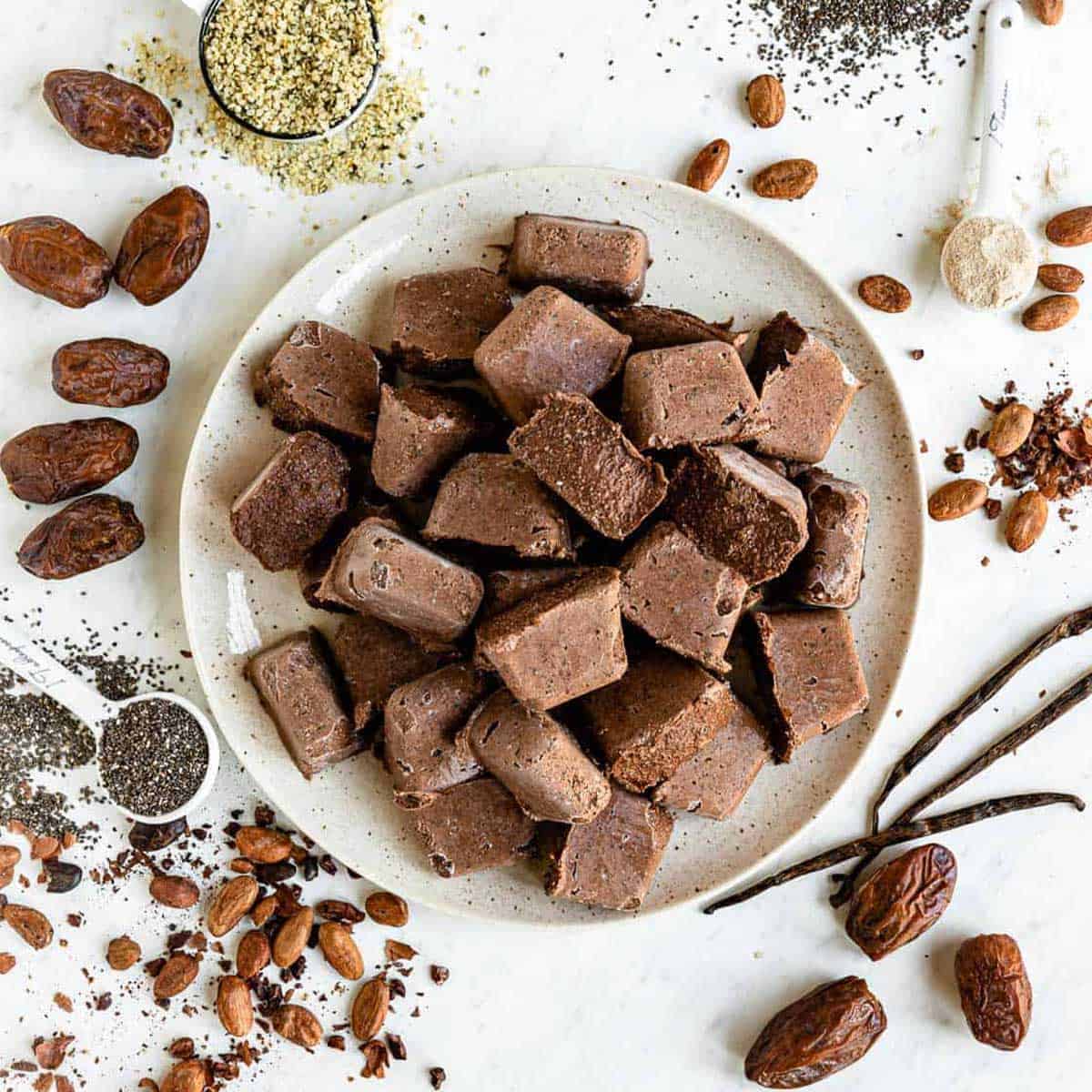
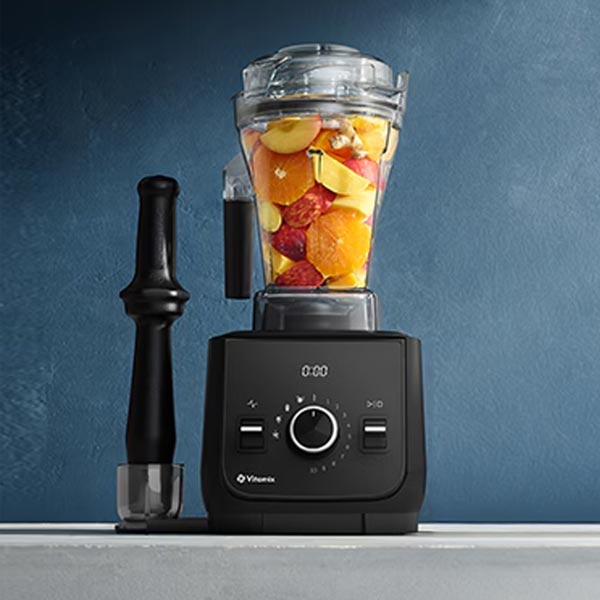
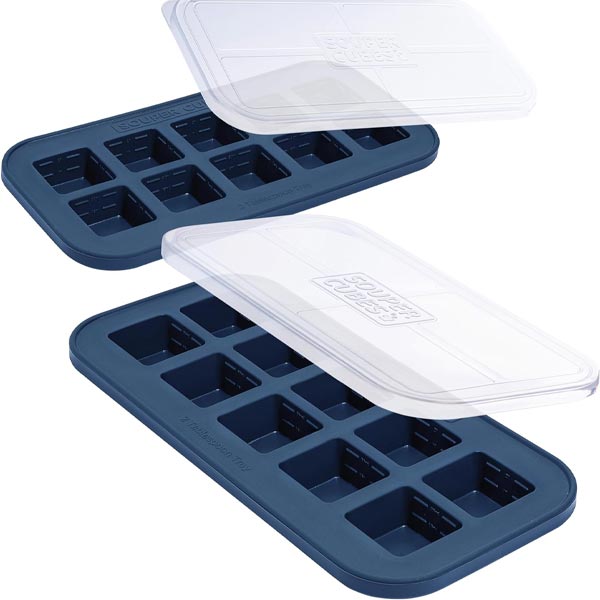
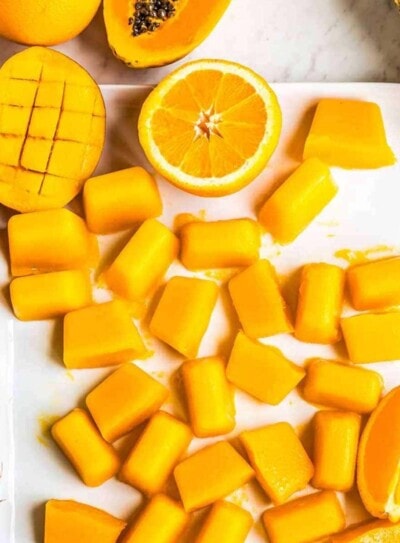

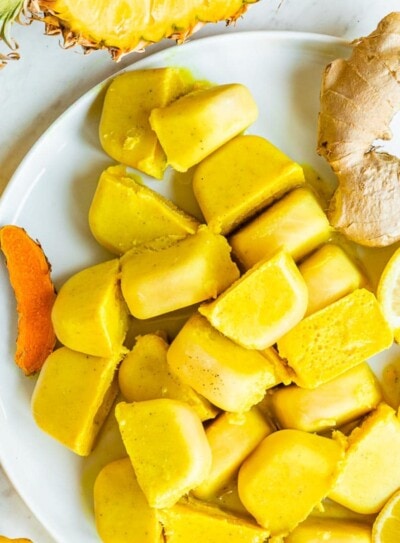
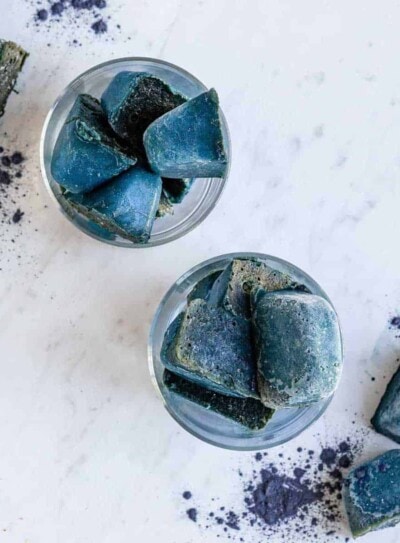
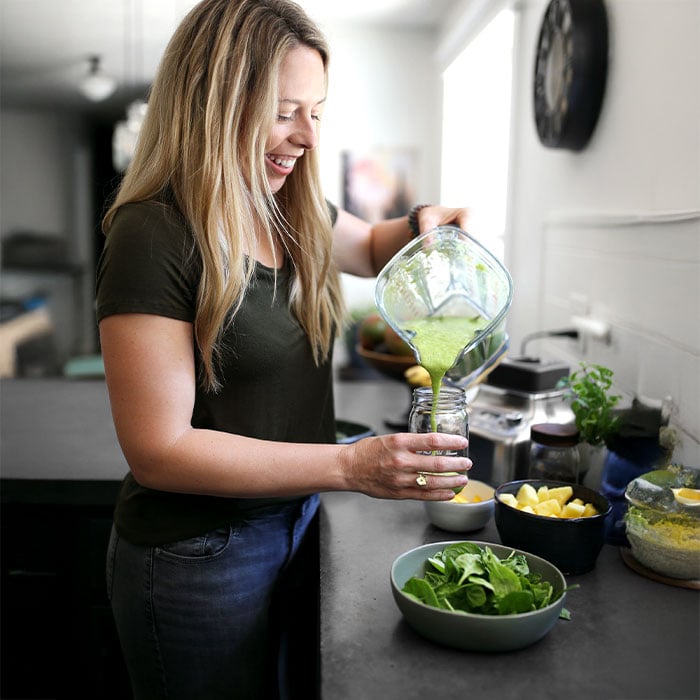









Are the nutrition facts for 1 cube or 4 cubes?
Hi Mary! It’s for a 4 cube serving.
Hey! Made these these this morning for the fridge!! And just made a smoothie with the leftovers. YUM!!!! In step #5 what does this mean? “add 4 protein + fiber cubes” How many cubes do I add when making the smoothie? And I am really intrested in the protein you have linked looks like amazing ingredients!!! Thanks so much for such an inspiring blog! Next – tumeric bombs!!!
I need a way to “choke” down more psyllium. Could I sub 1 c psyllium for the1 c hemp? (and doesn’t hemp have high omega-6?).
Thanks.
Hemp is def high in omega-6 and omega-3 – good point Cathy! While we’ve not tried swapping in psyllium for hemp, we think it could work well. If you give it a blend, def let us know what you think!
These are the bomb! (Total pun intention!)
Ummm…add chocolate and fiber to my smoothie – yes please!
Love the extra fiber boost! Thank you for sharing easy-to-make hacks for my smoothies. 🙂
My dad has digestive troubles and I decided to give this a shot for him. I mean what’s not to love– it really sounds like a healthier Fudgsicle to me. Well, we added these with almond milk and he had it for breakfast and said he liked it a lot. So i’m giving it a 5-stars all the way! Appreciate all the healthy solutions you provide.
It’s our joy, Megan!
I’ve always thought I wouldn’t like these, or that they would have a weird texture. Added them to your chocolate protein shake last week for the first time, and it just made the smoothie a richer flavor, which I liked.
We’re all about trying thew things. Way to be brave Erin!
Hi! I am allergic to nuts, so an unable to use almond milk. What would be a good replacement for that ingredient? I would LOVE to make these! Thanks. 🙂
Hi Cara! Lately, I’ve been using oat milk as a replacement for almond milk and I really like it. I think that would be a great replacement. And be sure to let us know how you like them!
So I have psyllium husks but they’re more like….. tiny flakes? Definitely not powder. Will that still work for this recipe? I’m excited to try this, not only for myself but my kids too!
Allison, I believe you will get a little less fiber per teaspoon but you can certainly still use what you have!
Allison, I believe you will get a little less fiber per teaspoon but you can still use what you have! It will def still work for the recipe. 🙂
Could I use flaxseed instead of chia seeds?
Yes, you sure can, Barb! Let us know how your cubes turn out using flax seeds.
Barb, What happened when you subbed relax for chia?
Is there such thing is adding too many of these? i think the flavor combo is wonderful and. could see enjoying one of these every day. Thanks for the creative idea to help us all stay regular 😉
Hi Dani, this *is* a great and tasty way to stay regular, isn’t it?! As far as your question, Jen says these smoothie cubes are a little different in that they are designed to be used as a replacement for all fruit in the recipe and blended with your choice of liquid and leafy greens as opposed to the other recipes in our Smoothie Cube Series that includes directions for substituting a portion of fruit in a recipe with the cubes. That said, you can add these to a fruity smoothie if you like. If you are going to add them to a fruity smoothie, I’d recommend starting with one to see how you like the taste and effects and then maybe increasing to two. Happy blending! 🙂